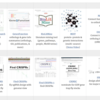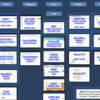Enrichment analysis
. 2020. “FlyRNAi.org-the database of the Drosophila RNAi screening center and transgenic RNAi project: 2021 update.” Nucleic Acids Res.Abstract
Navigating our online tools -- orthologs, literature mining, qPCR primers, and so much more!
Now Available: Our 2017 NAR database issue update
. 10/11/2016. “FlyRNAi.org—the database of the Drosophila RNAi screening center and transgenic RNAi project: 2017 update.” Nucleic Acids Research. Publisher's VersionAbstract
. 2007. “A genome-wide RNA interference screen reveals that variant histones are necessary for replication-dependent histone pre-mRNA processing.” Mol Cell, 28, 4, Pp. 692-9.Abstract
. 2014. “RNAi screening in Drosophila cells and in vivo.” Methods, 68, 1, Pp. 82-8.Abstract
. 2008. “Phosphorylation networks regulating JNK activity in diverse genetic backgrounds.” Science, 322, 5900, Pp. 453-6.Abstract
. 2005. “High-throughput RNA interference screens in Drosophila tissue culture cells.” Methods Enzymol, 392, Pp. 55-73.Abstract
. 2014. “Online GESS: prediction of miRNA-like off-target effects in large-scale RNAi screen data by seed region analysis.” BMC Bioinformatics, 15, Pp. 192.Abstract
. 2009. “Bili inhibits Wnt/beta-catenin signaling by regulating the recruitment of axin to LRP6.” PLoS One, 4, 7, Pp. e6129.Abstract
. 2005. “Genome-wide RNAi analysis of JAK/STAT signaling components in Drosophila.” Genes Dev, 19, 16, Pp. 1861-70.Abstract
. 2014. “Combining genetic perturbations and proteomics to examine kinase-phosphatase networks in Drosophila embryos.” Dev Cell, 31, 1, Pp. 114-27.Abstract
. 2011. “Proteomic and functional genomic landscape of receptor tyrosine kinase and ras to extracellular signal-regulated kinase signaling.” Sci Signal, 4, 196, Pp. rs10.Abstract



